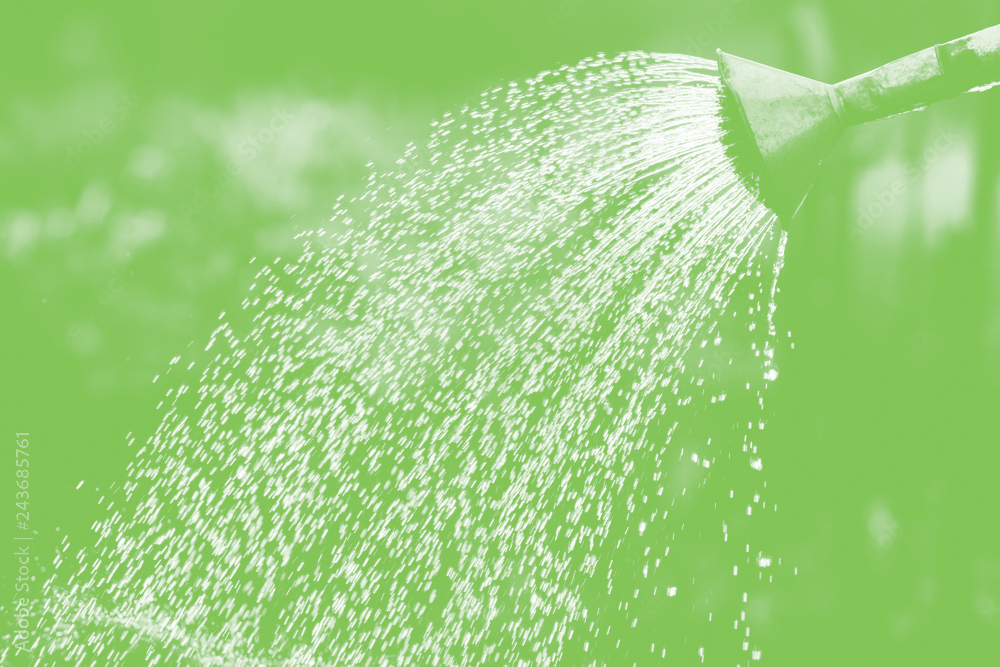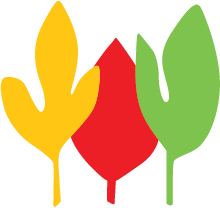
Houseplants provide a warmth and softness to our homes that many other design elements just can’t match and while this is one of the many reasons we love them, it is important to consider their needs before we place them in the corner of the living room. While some houseplants do just fine inside year-round when given enough light, others really need to go outside during the warm months in order to grow and thrive. The air movement, humidity, and temperature outside mid-May through mid-October in our area more closely reflects their natural growth cycle and preferred growing conditions than the environment inside our homes and one of the most important steps in this cycle is the transition back indoors for the winter.
Timing is everything when it comes to making this transition a success. Contrary to popular opinion, there’s no need to rush this at the first sight of cooler weather. Many of these plants are native to climates where the winter season gets cool and keeping them outside to experience this change works with the natural cycle of the plants to gradually acclimate them to the winter season indoors, thus reducing stress on both you and your plants. Beginning in September the light levels and air temperatures will start to decrease. This is when you should start making your plan to bring them back inside. Leaving them outside to feel these cool temperatures will signal them to slow down their growth rate and save energy in preparation for the lower light levels in the winter months ahead. It will also naturally decrease insect populations and keep diseases from spreading. If you have multiple plants to move indoors for the winter, start with plants that are currently fruiting or flowering because they are the most susceptible to the cold. These types of plants should be brought inside when the night temperature drops into the high to mid-40s. Most other houseplants, especially Birds of Paradise, Ficus, Schefflera, and Citrus (that are not actively flowering or fruiting) can stay outside during even cooler temperatures. These should be brought in when it is consistently in the mid to low 40s at night. If you have summer annuals or tropical bulbs like Caladiums, Elephant Ears, etc., you should allow them to go dormant naturally, then store them in their dormant form in a cool, dark place indoors until it’s time to bring them back out in spring.
Houseplants that are regularly taken outside during the summer growing season will only require what they need to survive during the winter months indoors...good health, adequate light, water and humidity levels, and a time to rest.
Good Health - One of the most common questions we get in the fall is “What should I spray on my houseplants before I bring them in?” Our answer is just a heavy stream of water unless there is an active pest issue on your plant. The water will help knock off unwanted insects, like spiders and ants, that are not harmful to the plant without wasting products and money that may not be necessary.
Diagnosing an active insect or disease issue prior to bringing your plants in is important because conditions indoors could exaggerate this problem. Not all sprays are effective on every insect and disease, so make sure you know what you are trying to treat before selecting a treatment. Not sure if you have an insect or disease problem or having trouble identifying what it is? Send us an email with photos or stop in with a sample and our diagnostician can help at no cost. Once there is a diagnosis then the correct treatment can be used on the plant to control the issue before bringing it inside.
Once your plants are inside for the winter it is helpful to regularly inspect plants for signs of insects and diseases because early treatment is going to be most effective. It is also important to watch your watering because overly wet soil can take a long time to dry out indoors and encourage fungal diseases and fungus gnats.
Light - Not all plants need the same amount of light and some are more adaptable than others, so when deciding where your plant should go it is important to know what light conditions your plant needs. Compared to plants that stay inside year-round, plants that go outside in the spring, summer, and fall, can typically handle a lower light environment inside during the winter than normally recommended.
Assessing how much light comes through your windows can be very deceiving to the naked eye. New, energy- efficient windows block out a large portion of the UV spectrum used by the plant; therefore, the distance the plant is from the window as well as the direction the window faces are very important factors to consider when placing your plant. South and west-facing windows typically receive the strongest light, but overhangs, blinds/curtains, and large shade trees outside can alter this.
It is important to turn or rotate your plants periodically to face the strongest light source so they will grow evenly and don’t stretch. It is also important to keep leaves wiped clean. The dust settled on leaves can affect the amount of light the plant receives.
Lastly, it is important to note that sometimes we just can’t give the plant the light it needs naturally; therefore, you may need to create it using grow lights. Using grow lights properly can be complicated, so you will need to do some research and/or speak with professionals to figure out what would be best for the type of plant you have.
Water - Just like lighting requirements, it is important to know what your plant needs in order to get it on its preferred watering routine. Prescribing an exact watering routine is kind of like predicting the weather. Every home is different and conditions change with the seasons, but in general, plants use less water in the winter than they do during the other seasons.
Once you bring your plant in, it may take a few weeks to learn exactly what it needs in the new environment. You can start by checking the soil moisture with your finger when you get it inside. Most often, you should let the top inch dry out before watering again. The heat running more on cold days, fans moving, a stretch of cloudy vs sunny days, or more humid rooms, like the bathroom and kitchen, will affect how quickly plants dry out.
Humidity – Using a personal or home humidifier to create the amount of humidity that would make an impact on the plants inside your home is not only very challenging, but it would also be damaging for your home and uncomfortable for you. Using a humidity tray can be moderately helpful for plants that are more susceptible to the dry conditions created by winter heating and it is especially important to note that misting does not increase the humidity and can cause or exaggerate foliar disease issues.
Time to Rest - Just like humans, plants need rest. Winter is their time of rest which means it is not a good time to repot, divide, or even fertilize, as these all encourage active growth. Only in unavoidable situations should plants be disturbed at this time, regardless if they grow inside year-round or are taken outside for the winter. In mid- March, near the spring equinox, the days begin to grow longer and plants begin an active growth period in which fertilization, repotting, and dividing is best accomplished. This period continues through the summer until around Labor Day.
Houseplants beautify the home and are also good for the psyche as well as the environment by cleaning the air. Take care of them and they will take care of you all winter long. Protect them from drafts and cold, but most of all take time to learn more about the specific plants you are caring for to help them not only survive, but thrive indoors.

